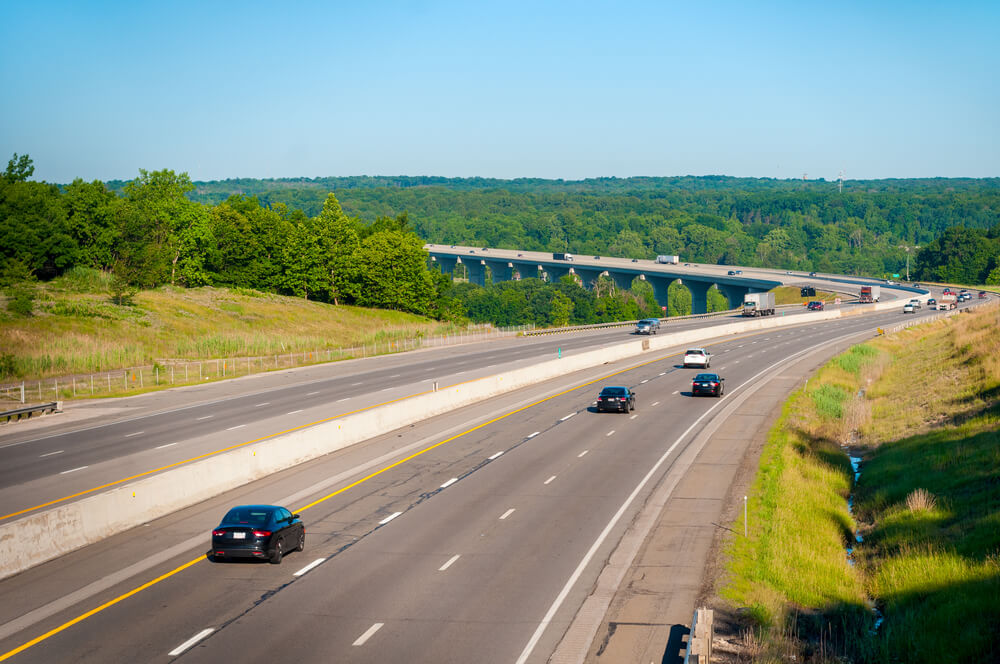Driving on the highway or freeway is something every driver must learn and get accustomed to. After all, there’s no way to avoid it; hitting the highway will save you a lot of time compared to local routes. That said, driving on the highway is quite different from driving around town and requires extra caution and alertness. And there is a correct process on how to drive on the highway safely.
Although many novice drivers are terrified at the thought, driving on the highway for the first time alone just requires a bit of basic knowledge, a bit of courage, plus a bit of practice. It will become simpler once you have hit the highway a few times. And reading this article will give you all the information you need, a step-by-step instruction and the driving tips on how to enter, operate on and exit the highway safely for the first time.

Contents
How To Drive On The Highway Safely: Preparation
Basic Fact-Finding
This is simple enough, yet many new drivers fail to do and later on regret about. Before learning how to drive on the highway, learn all the laws and rules of the road, and look for pictures or videos of the actual local highways so you know what different kinds of lanes look like. Another must is checking the local speed limits, including both the maximum and the minimum speed limit.
An important fact you should know about interstate highways is that most have a narrow strip of pavement or gravel on the right side of the right lane for emergency stops, like when your car malfunctions or you notice a flat tire. If for any reason you need to make an abrupt stop on a highway, turn on your right turn signal, slow down, look at your mirrors and steadily pull over.
Be aware of and accommodate different types of drivers: It is the responsibility of drivers of smaller vehicles to accommodate larger vehicles with poor visibility and major blindspots. An example of such a vehicle that regularly participates on the highway is transfer trucks that move goods across states.
In addition, this type of driver often has to drive long distances, sometimes even across the country, thus you should expect that not every truck driver is all attentive and alert. Fatigued driving is common enough. So be extra alert and extra careful when you’re handling close to a large transfer truck. That said, in all instances, it is basic safety rules that you use your turn signals, then check your mirrors and blind spots before changing lanes on the highway.
Car maintenance
Having a breakdown is bad enough, what’s even worse is having a breakdown on the highway. It might scar you for life, and might take quite a while until you dare to hit the highway again. So especially when you’re planning to practice highway driving for the first time, make sure your car’s in perfect working conditions. Have it inspected to check if the brakes, turn signals, lights, steering, transmission and everything else is problem-free.
Take it slow
This is your first time, so it’s important to take it slow and build up your confidence slowly. Pick a highway that’s preferably not known to be tricky to drive on and has seen many accidents and pick a time that’s not rush hour (weekends and evenings are best, but pay close attention to your local traffic reports).
Also pick a day when the weather is clear and dry. Driving on a crowded highway in inclement weather is definitely not the quest for a beginner. Lastly, make sure you are not in a hurry to get somewhere important. You must create the best possible mental state and external conditions for your highway practice.
READ MORE
How To Drive On The Highway Safely: The Steps
Entering the freeway

The first step of learning how to drive on the highway is entering smoothly. To enter the interstate highway from the driveway, drive toward the highway on-ramp, which is the entrance to the highway ongoing traffic. Turn on your turn signal, watch your mirrors and blindspot and head for the on-ramp at a reasonable speed at first. Then gradually increase your speed, so that as you’re driving off the on-ramp, you’re getting close to the speed of highway traffic. The purpose is to merge into the ongoing traffic at the same speed as everybody else, so that no one has to slow down just to let you get into the lane.
Entering the highway means you will typically merge from the on-ramp on the left into the outer right lane on the highway. As soon as you’re departing the on-ramp, turn on your left blinker. Here comes the hardest part of highway driving.
In preparation to merge with the oncoming traffic in the right lane, stay alert and alternate between looking at your left side mirror and your blind spot to see if there are approaching cars. When the coast is clear, merge onto the right lane while being aware of any approaching vehicles and turn off your blinker.
As mentioned above, you must adjust your speed when entering the highway so that you match the speed of other cars. Once you’ve safely merged into the right lane, make sure you keep up with the flow of traffic.
Although in many places, it is customary for existing vehicles in the right lane to merge into the left lane to make it easier for those entering the highway, it’s not their responsibility to let you in. If other cars have to slow down to accommodate you, take note to adjust next time. A successful merge is a seamless one where you do not affect other drivers.
Changing lanes
In addition to entering, and later on exiting, another crucial and basic part of highway driving is changing lanes. Again, regardless of what you need to do, as you cruise down the highway, a benchmark for success is not affecting other drivers, that is no one has to slow down to accommodate you.
Use your turn signal, mirrors, and glance at your blind spot every single time. An important rule in lane changing is that you should always stay in the outermost lane to the right, and if you need to pass a vehicle in front of you, you need to change to the left lane. This is why many vehicles have a sign on the rear that reads “Keep right except to pass” to remind other drivers behind.
This rule is to facilitate safe passing on the highway, and by dividing the lanes clearly for slower cars on the right and faster cars on the left, it also minimizes traffic congestion.
A very, very common situation on the highway is that you notice almost everyone else if driving faster than the speed limit. Remember that it’s not your job to enforce speed limits on the highway. If you are driving within the speed limit in the outermost left lanes and find a long row of cars following closely behind while there is a large space in front of you, you are in fact obstructing traffic.
You’re not wrong though, but you should let other cars in the same lane pass. In this case, or any case that other cars are moving faster than what you’re comfortable with, change lanes toward the right as instructed above to allow other cars to pass.
READ MORE
Passing
Once you’re comfortable changing lanes, try passing other cars. As mentioned above, you must pass from the left. Always pass a car by changing into the left lane, and then at a safe distance from the car you just passed, get yourself back into the lane.
To pass safely and also to avoid giving the other driver a heart attack, make sure you give them plenty of space in between, and notify them early with your blinker. Cutting in front of another car at high-speed highway driving can result in dangerous situations on the highway.
Exiting the highway
Getting off the highway is just the reverse of entering it. The signs and your Google map will tell you how many more miles to the next exit, or off-ramp. You will be departing from the right lane.
If you need to, take care to change to the outermost right lane safely. As you’re approaching the off-ramp, turn on your right blinker. When there’s no approaching vehicles, drive onto the off-ramp. As soon as the off-ramp departs the highway, look for the speed limit sign (the speed is always lower than that on the highway) and slow down to the appropriate speed.


